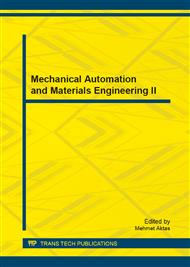p.600
p.605
p.611
p.616
p.621
p.625
p.630
p.636
p.641
Forecasting Performance Comparison by Using Power Transformation between VAR and Bayesian VAR Models
Abstract:
This article is devoted to examine the performance of power transformation in VAR and Bayesian VAR (BVAR) forecasts, in comparison with log-transformation. The effect of power transformation in multivariate time series model forecasts is still untouched in the literature. We examined the U.S. macroeconomic data from 1960 to 1987 and the Taiwan’s technology industrial production from 1990 to 2000. Our results showed that the power transformation provides outperforming forecasts in both VAR and BVAR models. Moreover, the non-informative prior BAVR with power transformation is the best predictive model and is recommendable to forecasting practice.
Info:
Periodical:
Pages:
621-624
Citation:
Online since:
June 2014
Authors:
Keywords:
Price:
Сopyright:
© 2014 Trans Tech Publications Ltd. All Rights Reserved
Share:
Citation:


